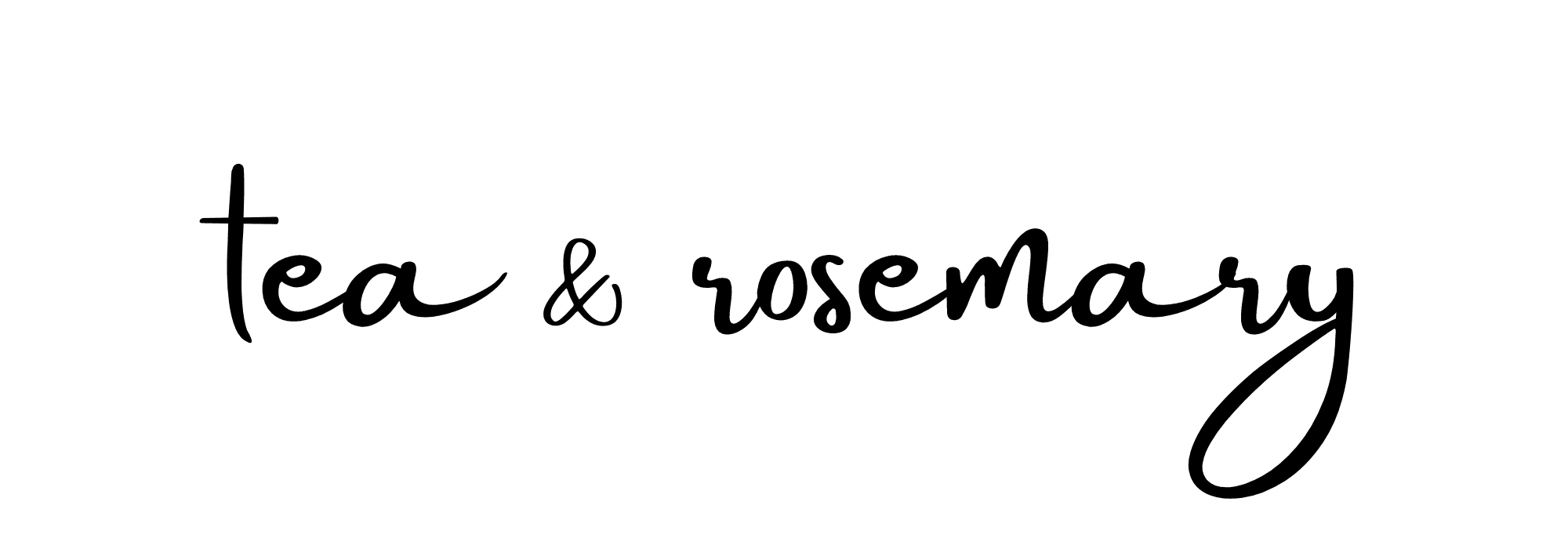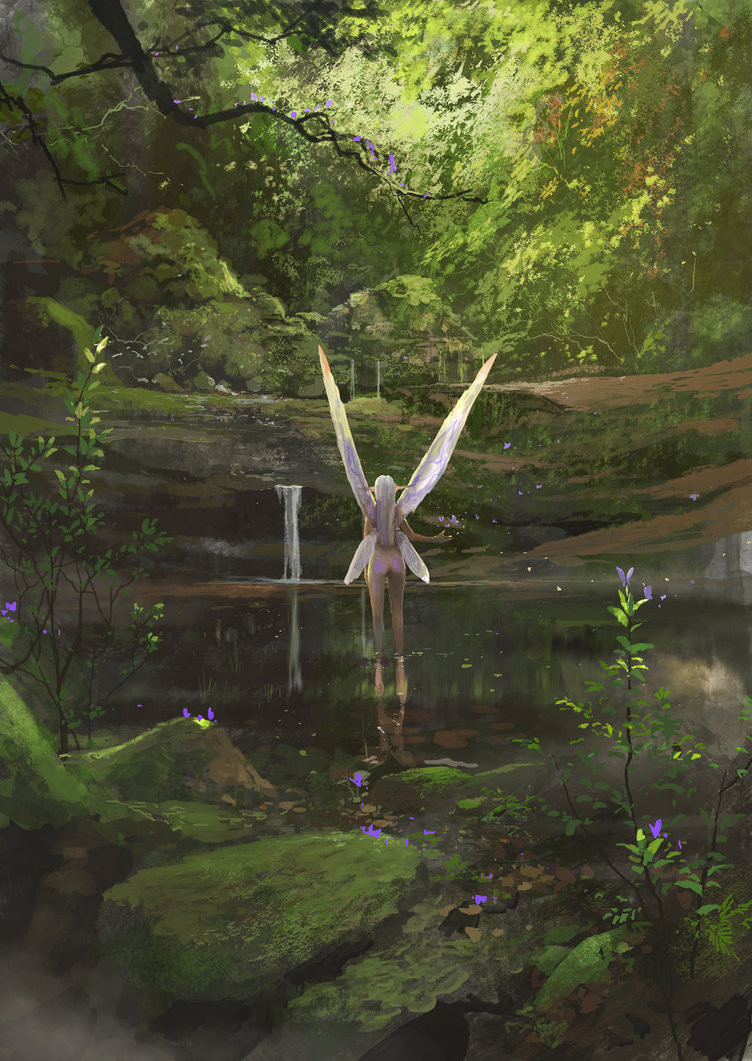When you first become interested in the fae, it can be a bit overwhelming. There are so many types of fairies and types of fae. Where to begin?
Today I’m going over the most well-known types of fairies. Keep in mind that I am not personally acquainted with every type of fae on this list because there are just so many!
I certainly believe that fairies exist, but there are some types that I haven’t encountered. Certain types of fairies are much more human-friendly than others.
Fairy, faerie, or fae is the general world for the fae folk, which includes many different types of fairies. Every type of fairy on this list is technically part of the fae folk but has a more specific name, too.
It’s sort of like calling yourself a human but also identifying yourself based on the country you’re a citizen of.
Because the fairy world is different from ours, not every type of fairy is so clearly defined. Their rules are different and they don’t always classify themselves in a way that’s easy for us to understand.
This is simply the best way we have to classify fairies. Plus, most fairies seem to call themselves by these names!
Many types of fairies consider themselves tied to one element. For example, pixies tend to be earth fairies, while salamanders tend to be fire fairies.
Some fairies can belong to more than one element, but this is rare. Fairies typically travel in groups according to the element they’re tied to.
Where Did Fairies (the Fae) Originate From?
There are many different legends that try to explain the origination of farieis.
One such legend says that fairies are simply nature spirits. They’re always present in the elements and are the caretakers of nature.
Another says that fairies are spirits of the dead, however this belief sprang up during Victorian times when “death” became a huge part of pop culture spirituality.
In general, most types of fae seem to exist near humans but are separate and distinct. They live on earth, in our world, but aren’t always in the same dimension/on the same plane.
Fairies are neither good nor bad. They all have individual personalities. However, working with fairies is pretty advanced and you do need to be careful.
You can learn from fairies and gain magickal powers, but you can also incur their wrath if they feel slighted or you can be tricked if you encounter a mischievous member of the fae.
It’s good to first learn about the different types of fairies and do a bit of research into the type you want to work with before beginning.
Related: Everything You Need To Know About The Fae Folk
Types Of Fairies:
If you’re just starting to learn about the different types of fae and fairies then you can quickly feel overwhelmed. After all, there are way more types than I could even include on this list, with many different distinctions and classifications.
As a beginner, you should definitely learn about Brownies, Pixies, Elves, and Dryads, as well as the Seelie Court and Unseelie Court.
The first are the types of fae that you’re most likely to interact with. The courts generally run the “world” of fairy.
I included all of the types of fae that I know the most about, but as my knowledge expands, I will add more types of fairies to this list!
Brownies
Brownies are your typical household spirit. They originated in Scottish folklore, although they popped up in English and German folklore at times, too.
Originally, Brownies were known as helpers for farmers. They tended to do outdoor tasks during the night such as shoveling hay, feeding the sheep, etc.
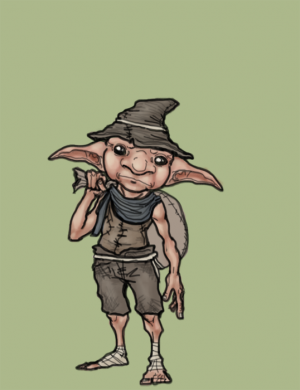
Brownies are short (at about 3 feet tall) and have pointed ears, brown complexions, and brown working clothes. They’re super earthly! In fact, when they don’t have a family, they tend to live underground because they don’t have wings.
J.K. Rowling definitely got some inspiration for house elves from Brownies. They have a lot in common. However, Brownies are never slaves and can leave a family or property anytime.
Brownies are drawn towards the most deserving families. To them, this means the people who work the hardest and who most need extra help.
When Brownies stick with a family for a while and are generally happy, they will bring good luck to the household. They’re a kind of magical magnet for luck.
If you have a Brownie living with you, then you should keep your house nice and tidy. Brownies will help you with chores but want you to keep the living area clean, too.
Don’t forget to feed your Brownie or they will get angry! They love milk, cookies, or honey left out at night. They simply want to feel thought-of.
Brownies will make friends with your pets and love being in a household with animal friends.
The typical drawing of the Brownie in Scottish lore shows the fairy sleeping with the barn cat. Brownies will get angry if you mistreat your pets because they can form quite tight bonds with animals.
Although Brownies can come out at any time, they’re nocturnal and do most of their chores at night. They’re shy and hate being spied on while they’re cleaning.
If you want to attract a Brownie to your house, there are a few things you can do to “put out a signal.”
First of all, Brownies like rural areas. Living on a farm will make your home especially attractive to a Brownie, but more nature in general is always better.
It’s also good if you live in a home with lots of hiding places for the Brownie to go during the day. They love homes with chests, closets, and secret doors.
Brownies love cozy houses, so try to make your home as warm and happy as possible.
You can also put out a request for a Brownie (even verbally saying it or writing the request on a piece of paper and burning it works) and see if you attract an interested fairy.
However, be careful because Brownies can be fickle. If you upset them, you’ll find yourself in a bit of trouble. They will either take off, never to be seen again, or will cause problems in your home.
Don’t try to pay your Brownie for anything or be too materialistic when it comes to them. They don’t want expensive items as gifts but simply enjoy thoughtful presents like the food they enjoy or comfy little areas set up for them in the home.
If you treat your Brownie well, they can be super loyal to your property or even your family. Some Brownies bond really tightly with their families, or even one member of the family, and feel quite the allegiance.
Although Brownies will sometimes be “in between” families, they’re very social and generally like living around people. These are some of the sweetest types of fairies who love being around humans!
Pixies
When you think of the different types of fairies, the image that pops into your head is probably a pixie, even if you don’t realize it.
Pixies are only about 4 inches tall and tend to live in the gardens and woods. They’re the types of fae that has the most contact with humans, so they tend to show up a lot in pop culture such as fairytales or Disney movies.
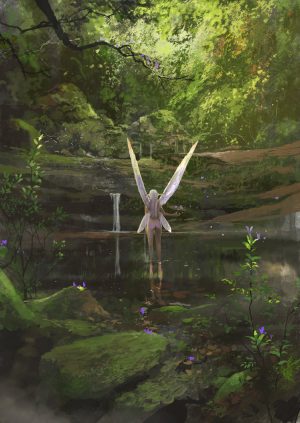
Although pixies are well-known in southwestern England’s folklore, they can live in any wooded area or garden. You can easily find pixies if you simply walk into the woods or a pretty patch of flowers! Pixies will go anywhere where there is nature.
In fact, if you want to work with the fae, you can quite easily attract pixies to almost any location.
Pixies do have wings, but they’re known as earth or nature fairies. They’re super tiny with human-like figures and delicate wings that move extremely fast, almost like a hummingbird.
Some Pixies dress only in green while others prefer other colors of nature, like blue or yellow.
Pixies will choose an area or community to live in, but these communities get torn up quite often to build homes and developments.
When this happens, the pixies in the area will be traumatized and go into hiding. However, they may not leave unless the area is totally decimated.
If you want to draw pixies into your yard, create woodsy areas or a pretty garden for them to live in. Pixies appreciate both shelter and nature, and they will always come check out a cute little fairy house!
Even though pixies tend to enjoy contact with humans, they’re very cunning and can delight in leading humans astray. They are your typical mischievous types of fairies. Of course, every pixie will be a bit different since they all have individual personalities.
Pixies don’t understand human desperation or pain. They play a lot of jokes for fun, but these jokes may not seem funny to people and can cause harm for humans.
They’re especially known to steal stuff from your home or take items and hide them somewhere else so you can’t find them.
However, as long as you treat pixies well and give them gifts that they approve of, they will probably respect you, too.
They enjoy tiny houses, nectar, and honey. Leave a small offering out for pixies if you’re interested in making contact!
Pixies especially love flowers, so planting blooms (especially those native to your area) will draw them towards your property.
You probably won’t be able to find a pixie community because they magically cloak these areas. They like to stay hidden, especially nowadays due to the devastation of nature. But, they will come to your area if you create a beautiful, natural spot!
When you’re giving gifts to pixies, consider what is natural to your region. They will especially enjoy things that grow naturally in your area. In return for your gifts, pixies will help your gardens flourish and grow.
Banshee
The Banshee only exists in Ireland and Scotland, typically on the Moors, and has the “cry of death.”
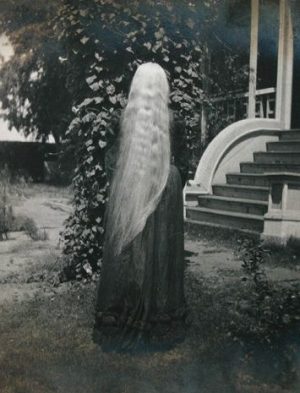
The Banshee is a female spirit/type of fairy that predicts death. Her cry is typically an omen.
She can appear in a lot of different forms. According to fairy-lore, she is known to appear either as a beautiful young woman, a stately matron, or an old, ugly hag.
The Banshee isn’t often seen with the physical eye but she is certainly heard. Her mourning cries are known to be extremely haunting.
The Banshee runs a comb through her long, silver hair while she cries. In fact, in some parts of Ireland, combs are thought to be bad luck simply because of the Banshee.
Some folks believe that there are many different Banshees in Ireland; a group of Banshees is very bad luck compared to a single fairy.
The Banshee usually doesn’t harm people she encounters, but her cry does predict death. However, when you hear her cry, she is simply predicting the death for someone in the area, not necessarily your own.
Leprechauns
Leprechauns are well-known types of fairies, but they’re also very real!
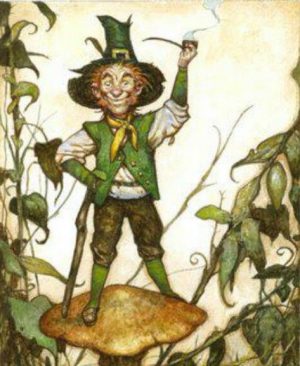
Leprechauns appear as super small, aged men dressed in green or red. They often wear a pointed cap and love to smoke pipes. They’re mainly found in Ireland.
Even though most types of fae don’t have set jobs like humans do, Leprechauns are the exception. They are first and foremost cobblers, but can also act as bankers in the fairy world.
You will hear Leprechauns coming by the tapping of their hammer. They always have a shoe and hammer in hand. Legend says that Leprechauns are are constantly crafting shoes because other types of fairies wear out their shoes nightly during revels while dancing.
Leprechauns also love music and dance themselves. They especially enjoy the fiddle, the Irish drum, and the harp. Sometimes, a Leprechaun can even help a human with their musical abilities.
Some Leprechauns are distrustful and secretive around humans, but if you act kindly towards them without expecting anything in return, they might bestow some of their gold upon you.
Most Leprechauns avoid humans. It’s said that if a human can capture a Leprechaun, then the fairy must reveal the hiding place of his gold. However, almost every human who has tried this has been tricked by the Leprechaun and ends up with less than he started with.
Leprechauns love gold and ale. They’re known to be information brokers and always have a bit of information to sell you, probably for a hefty price. They’re typically honest, although a few of them can be tricksters.
Related: 3 Types Of Energy Vampires & How To Handle Them
Elves
Although Elves have become super popular due to books and movies, legends around elves date back thousands of years.
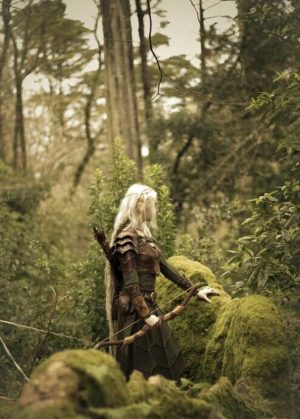
According to mythology, there are both light elves and dark elves in the fairy kingdom.
In general, legends about elves tend to be from European/Germanic sources as well as Nordic and Icelandic. Elves are often depicted with blonde hair and blue eyes.
Out of all of the types of fairies, elves are closest to humans in size and stature. They’re a bit slimmer but are similar height.
Elves have high cheekbones and angular features compared to humans. They are also said to have mesmerizing eyes and pointed ears.
Nowadays, folks in many cultures still believe that elves exist. In fact, many of the caves in Iceland are protected by the government because 3/4 of the residents believe that elves reside in the area.
Elves are thought to be the types of fairies who typically place changelings in human homes. This can occur for a variety of reasons that I’ll discuss in the changelings section of this post.
While elves are sometimes friendly towards humans, they can also take revenge if they feel offended. They generally stay away from humans, especially when compared to other types of fae.
Legend says that elves are the types of fairies that are the protectors and caretakers of the forest. They are usually tied to the specific forest that they protect and live in groups.
Elves are very smart and agile. They have keener perceptions than humans but use their senses in nature and avoid technology.
Kobolds
Kobolds are types of fae who live in mines. There haven’t been many sightings of Kobolds so it’s hard to say exactly what they look like.
Generally, Kobolds only interact with miners. Some Kobolds are trouble makers and will undo the miners’ progress, but others will actually help or knock on the tunnels to warn the miners of a cave-in.
Changelings
Changelings are a rather scary part of fairy legend. While they aren’t exactly a type of fae, changelings are in a league of their own.
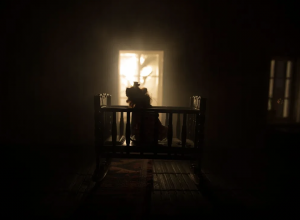
According to legend, a changeling is a fairy child that has been swapped for a human child. The changeling will grow up with human parents but won’t appear like a normal human child.
Fairies swap babies for a few reasons; each culture has its own legend. Sometimes, a fairy will swap a sick fae child with a healthy human child. This fae child will either die in infancy or will grow up sickly. You will notice that they’re beautiful and artistic with fairy features, even though they may be unhealthy.
Other fairies swap their babies because they want a beautiful human child and feel that their own baby is ugly, or to strengthen their bloodline if there is sickness. Sometimes, a fairy will need a talent that only a human child possesses.
Of course, changelings are rare, if they really exist anymore. The development of technology has made the practice of swapping babies dangerous for fairies.
If you do encounter a changeling, you’ll notice their fairy features. They won’t look like their parents and will probably have some magickal skills. They may also have trouble fitting in socially because fairies relate to each other in a very different way.
It’s unclear if changelings ever truly existed or if this was a way to explain infant mortality rates in Medieval times. I can’t personally attest to the fact that changelings exist, but I won’t rule it out. I find that all legends have some bit of truth in them.
Devas
Devas are small fairies that look almost like fireflies. If you live in a woodsy area, you have probably seen devas without even knowing it.
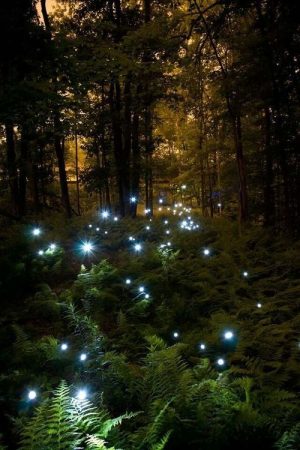
The deva originated in Persia and Greece. Devas appear as bright orbs of light in nature, although they’re particularly found in the woods.
Devas love being around well-cared for plants. They are known to guide medical researchers or witches seeking to use plants for their medicinal qualities. However, a Deva won’t stay near a plant that is in decay.
Dryad
Dryads are types of fairies that are tied to trees. While they aren’t the actual spirit of the tree and are a type of fae, if the tree dies, the dryad will die too.
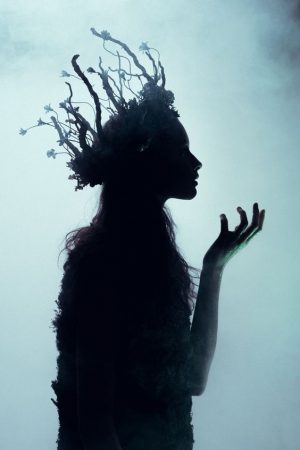
Dryads don’t typically travel far from their trees. They’re very attached to one specific area and will do everything in their power to keep their tree alive.
These types of fae will look more favorably upon humans if they care for their trees. They can be a bit shy, but when they see a human taking care of the environment and treating animals and nature well, they’re more likely to open up and communicate.
You will be able to tell that you have a dryad in your yard if any of your trees have a “face” look on them. Alternatively, you will feel an active, different energy around a tree; this indicates that the tree spirit also has a dryad attached.
If you want to chat with dryads in your backyard, first show them your spirit through taking care of your trees. After a bit, they will begin to trust you.
It’s easier to communicate with dryads if you’re actually touching the tree and standing on the ground with bare feet since they communicate through the earth.
Dryads are some of the sweetest types of fae. If you’re just dipping your toes into communication with the fae, I recommend starting with dryads!
Gnomes
Gnomes are well-known due to pop culture, but they’re actually one of the many types of fairies that live among tree roots in the forest.
The myth of Gnomes originated in Scotland, but they’re thought to inhabit any woodsy area, including many parts of the U.S.
Gnomes look almost like little dwarfs. They mature quickly, so they typically appear old. They wear pointed red hats with green or blue clothing.
You’ll find gnomes in most natural, woodsy areas, so their diet depends on exactly where they’re living. Gnomes are known to enjoy fruit, nuts, vegetables (especially root vegetables), eggs, and mushrooms.
Gnomes are extremely connected to nature. In fact, they’re actually earth elementals, so they’re very powerful with anything related to the earth. If you want to work earth magic and manage to befriend a gnome, then they can help you to grow super powerful.
They’re known to care for animals and are natural healers, although they tend to use their powers for animals and plant life, not humans.
Gnomes are very shy and cautious. They stay far away from humans, especially due to their small size.
Irish Sea Water Guardians
Irish Sea Water Guardians are only a few inches tall, but they fiercely guard the Irish sea.
These types of fairies are sacred to the Irish sea god Manann. They’re surrounded by a greenish blue light; you won’t often see them with the naked eye but may see the light that they give off.
These types of fae especially love storms! They surf the waves and bob up and down. They’re friends with dolphins and other intelligent sea creatures.
If any sea creature needs help, the Irish Sea Water Guardians will always come to their aid.
Kelpie
Kelpies are ugly, scary water fairies that are thought to be cannibalistic and carnivorous.
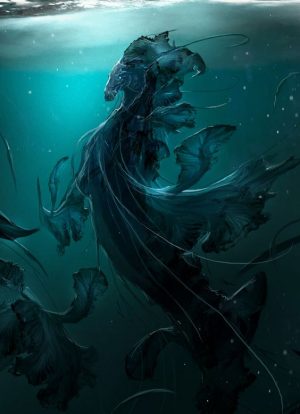
According to Scottish and Irish legend, Kelpies eat deer off the shoreline as well as other types of fairies and even humans.
Male kelpies are thought to be shapeshifters. They can turn into handsome men to lure young women into the water and either trap them or consume them.
Typically, the kelpie is seen in the form of a horse if they won’t reveal their true form. You can find kelpies in the ocean as well as rivers and streams.
Some kelpies are even though to be the classic scary monsters that have created huge legends, such as the Loch Ness Monster.
Merfolk
Mermaids are huge in pop culture, so most people don’t believe in them. However, in the witch/magical community, Mermaids are definitely real.

Most of these types of fairies prefer to be known as mer or merfolk, although they’re called mermaids and mermen in pop culture.
Merfolk are very beautiful (both the men and women) and are half human, half fish creates who live in the oceans and seas.
There are stories about Merfolk that paint them in both a positive and a negative light. Some tales sale that Merfolk lured ships to the rocks and sailors to the deaths, while others say that Merfolk rescued drowning men.
These types of fairies do not live in homes. Instead, the swim throughout the oceans and frequently migrate. They tend to live in family units, although these can grow quite large. Merfolk protect everyone within the group.
Although the Merfolk generally hide from humans, they have become more visible as the ocean gets polluted. They will sometimes reach out to humans to try and stop further pollution.
Nymphs
Nymphs are a type of fae from Greece. There are many different types of nymphs, including tree nymphs, water nymphs, wood nymphs, etc.

In some legends, nymphs have the reputation for being hyper-sexual. They are generally known as beautiful females, but unlike Sirens, they are relatively harmless.
Nymphs can be a bit mischievous like all types of fairies, but they don’t hurt humans. Sometimes, they even fall in love with humans and will be quite committed.
Salamanders
Salamanders aren’t a well known type of fae, but they are powerful!
Generally, Salamanders are known as a fire elemental and can be really helpful if you’re a witch working with fire. They appear as fiery lizards in red and orange tones, although they are also known to show up as a classic fire fairy or even a ball of fire or light.
Salamanders are some of the strongest elementals. They embody the spirit of fire. They come to the aid of humans or witches in the areas of passion and revenge as well as the physical manifestation of fire.
Like all types of fairies, Salamanders can be mischievous, so make sure you know what you’re doing before you ask them to work together. They can get quite upset if they feel that they have been slighted and wreak havoc.
Seelie Court
The Seelie Court is one of the most well-known aspects of fairy-lore. They’re thought to be benevolent fairies who act as arbiters and judges in faery disputes.
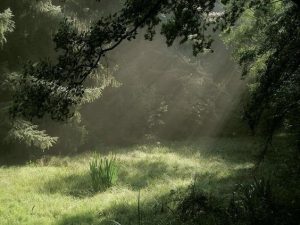
The Seelie Court is typically seen at twilight when they conduct their courtly processions. They’re especially active during the spring and summer months.
Most members of the Seelie Court enjoy beautiful things. They’re all about the stunning dresses and clothing, harmonious instruments, delicate flowers, and of course, dances. The Seelie Court is made of the most beautiful types of fairies.
The Seelie Court types of fairies are known to be somewhat friendly to humans. They are said to seek help from humans if needed and return human favors with kindness.
However, like any other types of fairies, the Seelie Court has mischievous fairies, too. They can easily play tricks on you or get revenge if they feel slighted.
The Seelie Court is known as the “good” counterpart of the Unseelie Court. Some legends say that they fight each other, while others say that they are simply polar opposites and avoid each other.
Selkie
A Selkie is a type of fae that has the abiliy to change from a seal into a human being at-will.
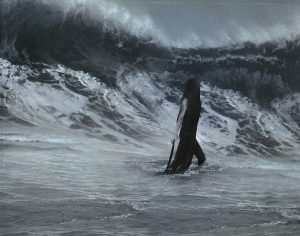
Selkies occupy the seas near Ireland, although their exact location is fluid. They take the form of grey seals or great seals while in the sea, but they can also appear as human women or classic fairies. They tend to come out on important seasonal days (such as Midsummer’s Eve).
Legend says that Selkies occasionally mate with human men. Some tales say that a man can wed a Selkie if he finds her seal skin on the beach and hides it from her, but she will return once she finds it.
Will O’Wisp
The Will O’Wisp is a type of fae that is seen on any body of water at night. They will look like a small firefly or flickering orb of light.
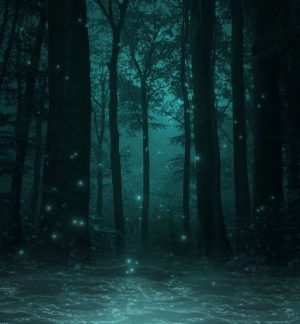
The Will O’Wisp is seen across the world and is known by many different names in different cultures. They will typically appear in groups, so keep your eyes out for a bunch of flickering lights.
They also tend to like calm waters rather than rough waves, so they’re more commonly found on lakes or ponds.
Sometimes, Will O’Wisps are also found in earthly areas, such as on grassy hills or even in the woods.
Some legends say that these types of fae only appear as lights, while other stories say that the lights are from the lanterns these fairies carry as they revel. Generally when you see Will O’Wisps, you can assume that they’re having a party, which they do almost nightly.
Unseelie Court
The Unseelie Court is the darker counterpart to the Seelie Court. The Unseelie Court is made up of many different types of fairies, but they’re thought to attract lower types of fae such as Boggarts and Bogies.
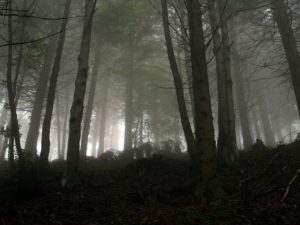
The Unseelie Court is thought to be ugly or even hideous and more than a bit scary. The court can be made up of dark fairies as well as lost spirits, so they tend to be most active during autumn (Halloween) and winter.
Dark magic is often the work of the Unseelie Court. They’re known to work with witches concerning black magic or make deals with humans, but these deals never work out well for the human.
In fact, humans would do well to stay far away from the Unseelie Court. There is virtually no way to get along with them, but there are many ways to make them angry.
The term “unseelie” translates to “unblessed.” Even in the fairy world, the Unseelie Court is dark, dangerous, and evil.
The court travels at night on the winds. Members of the Unseelie Court can’t reproduce, so they’re said to steal humans and force them to join the court in order to keep their numbers up. According to legend, travelers going through woodsy areas at night should be careful and avoid the Unseelie Court.
Related: Types Of Ghosts, Spirits, and Entities
Boggart
A Boggart is generally thought to be a Brownie turned bad. Similar to Boggarts in Harry Potter (J.K. Rowling seriously got a lot of her info from fairy-lore), modern-day Boggarts will haunt a home or an area, such as a trunk or a closet, and cause general issues.
Typically, a Boggart is a Brownie who was treated badly. This can make the Brownie act out, and over time they will turn into a Boggart, which means they’re attached to a property for the purpose of causing issues.
Alternatively, a Boggart can be a Brownie who stayed with a home after the family left. If the home falls into disrepair but the Brownie is attached to the property, then they can start to go a bit crazy and begin “haunting” the area.
Other Boggarts are Brownies who are simply mischievous in nature. Although most Brownies are helpful and social, there are always a few who are just naturally pranksters. These Boggarts delight in playing tricks on humans or scaring them.
Ideally, you will never encounter a Boggart because you won’t anger a Brownie, but if you do get into a situation with a Boggart, you may need to do an exorcism of your home.
Related: What Kind Of Witch Are You? A Guide To All 22 Types
